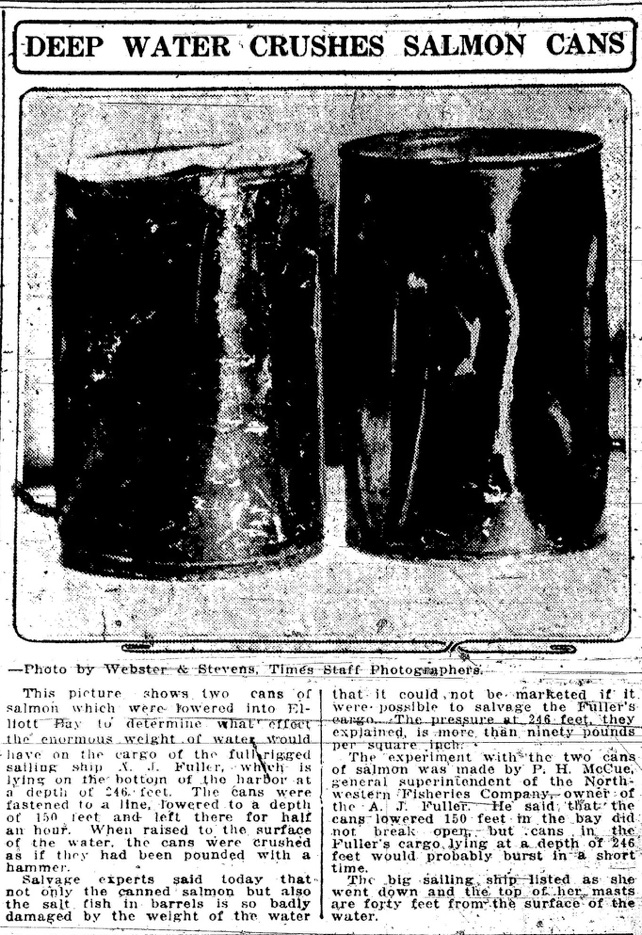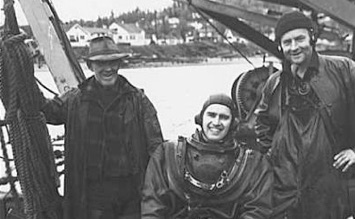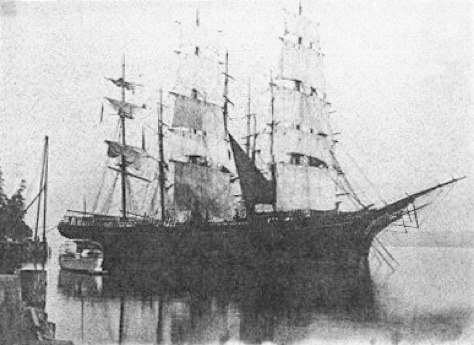AJ Fuller
The AJ Fuller was a 1782 net ton (1,848 gross ton), 229 foot long, 41 feet wide, wooden, three-skysail characterized as a “Downeaster” that was launched on May 14, 1881 in Bath, Maine from the Chapman and Flint yard.


It was named after a prominent citizen in Maine at the time, Dr. Andrew Jackson Fuller. Built by John McDonald for Flint & Co. of New York and advertised as a "Magnificant New Clipper Ship Offering The Cheapest Freight Route To California."
For her first 11 years she was commanded by Captain Theodore P. Colcord for use in fast shipments in the New York-San Francisco-Liverpool runs. Later she made trips to the Orient carrying case oil, and continued to make speedy runs from the North Atlantic to Honolulu with Hawaiian sugar for the east coast.
In October 1899 she was sold to California Shipping Co., San Francisco, and used in the export of lumber trade for the next 10 years, often returning with Australian coal to the pacific coast. Eventually the AJ Fuller was sold to Northwestern Fisheries Co. in 1909 for use in the Alaska salmon trade to make runs from Alaska to Seattle.

The Fuller had arrived in Elliot Bay in October 1918 from the north in Uyak, Kodiak Island, Alaska. Her holds stored 48,075 cases of salmon, 3,300 barrels of salt fish, 28 boxes of labels, and 280 empty oil drums. She was moored on a large steel buoy approximately 2000 feet from Harbor Island.
All of the crew had gone ashore, including Captain Mark Haskell, with pay in hand. Only the first mate and watchman stayed aboard. It was a cold foggy night on October 30, 1918, and around 1 am the first mate was awakened by the watchman telling of a ship that was 300 feet away and closing. Next, there was a jolt that must have shaken them to the very depths of their souls. The Japanese steamer, Mexico Maru, out-bound on a southernly course slipped right into the Fuller's anchorage area, and slammed into her starboard bow. Luckily all of the 100 cannery workers were ashore, because the Maru cut a 10 foot wide hole right where some of these men would have bunked.
The first mate Torger E. Jorgersen and watchman John E. Johanson immediately ran from their quarters and lowered a lifeboat without even pausing long enough to survey the damage. The Maru picked up the two and brought them ashore to pier 6.
The 229 foot AJ Fuller sank in about 10 minutes, dragging down its steel buoy, and now rests on the bottom of Elliot Bay in 225 feet of water.
When the fog lifted, two fireboats went out to the crash site to investigate the scene. There they found and recovered 42 empty oil drums, and two small boats. The Mexico Maru, with chunks of the Fuller still lodged in her anchor, continued on towards Tacoma.
Six months later, a Seattle deep diver by the name of Captain Henry Finch investigated the wreck. He descended down to the top masts and positioned himself in the rigging. Using wire sweeps and grappling hooks, Finch recovered several artifacts including, several blocks and chains, part of the taffrail, and the ship's compass. Still attached to the compass, was the top of the wheelhouse, which Finch also recovered. The cargo of Salmon was a total loss.


The owners, Osaka Shosen Kabushiki Kaisha Line, the Captain, and officers of the Mexico Maru were found negligent and payed $504,000 for the loss of the AJ Fuller and its cargo also including, Haskell’s personal effects (including his sextant), 4 of his crewmen’s effects, the city’s buoy, anchor, and 90 fathoms of chain. Later reports put the pay-out closer to $850,000.
The AJ Fuller is noted by Washington’s Office of Historic Preservation as eligible for listing on the National Register of Historic Places.

Captain Henry Finch, his son, and crew-
member years after salvage.
Courtesy PS Maritime Historical Society



All B/W Photos; Courtesy Puget Sound Historical Society

Courtesy Seattle Daily Times

AJ Fuller
Courtesy Seattle Daily Times


-
-Home
